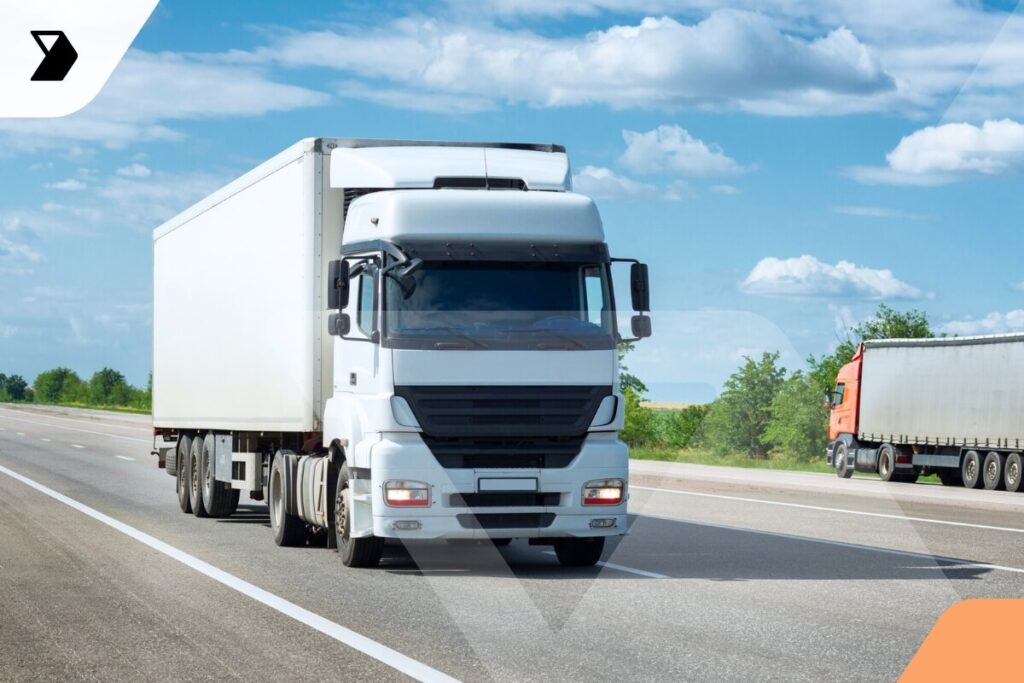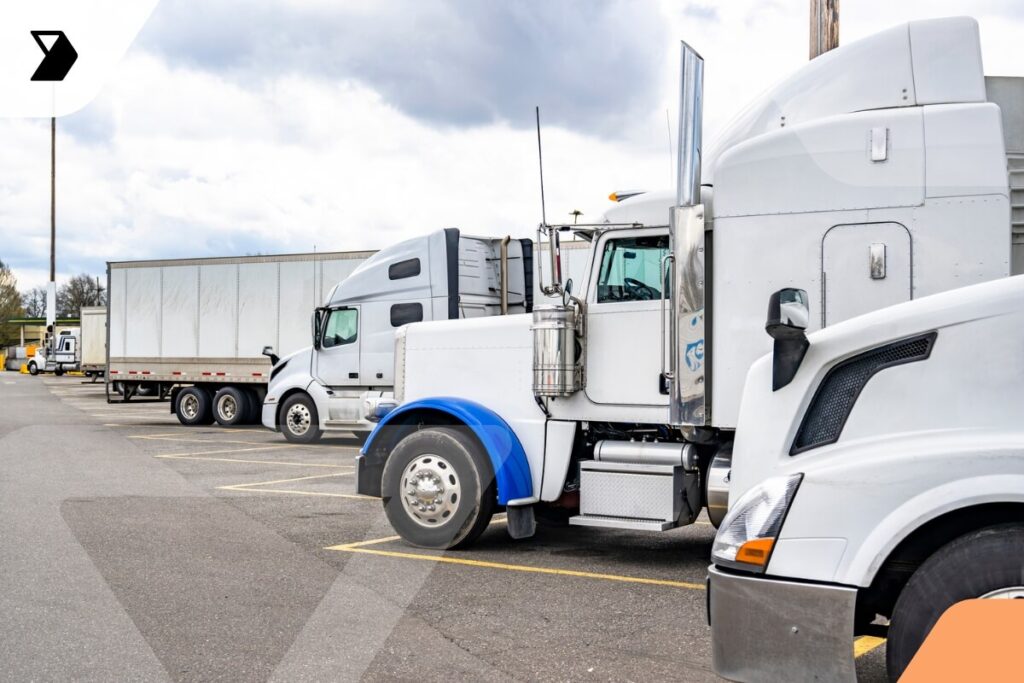Contactless Vehicle Inspection Reports With a DVIR App
Driver vehicle inspection reports, or DVIRs, are a necessity of trucking.
Ready to transform your supply chain?

The law requires you to complete these reports, and they’re also an important part of making sure your company operates smoothly.

From federal compliance to improving CSA scores to increasing on-time deliveries, DVIRs are imperative.
However, in the wake of a global pandemic, handling of DVIRs has been trickier than ever. COVID-19 by its very nature, requires care and caution. More specifically, DVIRs traditionally required a lot of physical contact. Now, of course, we need to think about proper social distancing.
So today, let’s answer a couple of questions.
- What’s a driver vehicle inspection report?
- Why is the DVIR important?
- What are the challenges COVID-19 adds to DVIRs?
- What’s the best way to avoid COVID-19 while improving your business?
I’ll address all of these below.
What Is a Driver Vehicle Inspection Report?
Firstly, let’s dig into what exactly the DVIR is. DVIRs are a federally mandated log that drivers must complete. These forms detail vehicle operations and safety issues noted during vehicle inspections. Also, drivers must complete these at the beginning and at the end of each shift.
Pre-Trip Inspection
If you’re driving a commercial vehicle, before you hit the road, you must complete a pre-trip inspection. Firstly, you’ll need to check the most recent DVIR completed for the vehicle. If that DVIR notes any defects, you must review them. Then, you can either have them repaired or signed off on as okay until the next inspection. Beyond this, you need to complete a thorough inspection of the vehicle. If everything looks good to go, you may sign off the vehicle.
Post-Trip Inspection
You’ve completed your trip. What next? Now you need to complete a walk-around inspection of the vehicle. If you find any defects, report them to the fleet manager immediately. Correcting the defects is the fleet manager’s duty.
Here’s one important note on the post-trip inspection: If you find no defects, then you don’t have to file the report.
What’s on the DVIR?
Naturally, you want to know what exactly you’re inspecting for. Therefore, I’ve provided a list of what a standard DVIR checklist should cover.
- Lights and reflectors
- Tires, wheels, and rims
- Windshield wipers
- Coupling equipment and fifth wheels
- Brakes and air system
- Steering mechanism
- Rear-view mirrors
- Safety and emergency equipment
Anything Else I Need to Know?
Yes! Let’s go over two important details on DVIRs.
First and foremost is what to do if you operate multiple vehicles. You’ll need a separate form for each vehicle you operate. For example, if you drive three different trucks in one day, you must complete a DVIR for each.
Secondly, your company must keep any defect reports for at least three months. This is federal law.
Why Is the DVIR So Important?
Okay! Now you know what the DVIR is and what’s on it. But why does it matter so much? Let’s find out below.
It’s the Law
I won’t spend too much time on this one. These reports are federally mandated. Essentially, if you don’t do them, the government could shut down your business. There’s no reason more important than this one.
Keep up Vehicle Maintenance
Vehicle maintenance is so important to running a profitable trucking company. Obviously, you need trucks to make deliveries. Moreover, you need functional trucks to make deliveries. Therefore, DVIRs ensure that drivers quickly and efficiently communicate any and all maintenance needs. In turn, fleet managers can take the necessary action to fix the equipment.
Thus, you need DVIRs to maintain the chain. Deliveries need trucks. Trucks need maintenance. DVIRs explain what maintenance trucks need.
Improve Your CSA Scores
Ultimately, DVIRs help you avoid DOT violations. How? It’s simple! After all, the various roadside inspections that DOT performs will identify issues that a DVIR has already uncovered. Therefore, complying regularly with DVIR reports helps your CSA score. You can deal with any issues before the DOT stops your vehicle. You don’t want a violation at a roadside inspection. Beyond just your vehicle safety issue, your driver may be put out of service. This increases delays in on-time deliveries.
What Challenges Are Coming From COVID-19?
Obviously, our entire world has changed since the spread of COVID-19. The wildly contagious strain of the coronavirus has done a number on the United States. While some industries can halt during this time, logistics isn’t one of them. Places all over the country count on deliveries. Product shipment to places of need is as important as ever—maybe even more so.
This poses a number of questions. What are the safest procedures to prevent the spread of COVID-19? We all know the basics: social distancing, wearing masks, washing your hands, and so on. The struggle becomes, how do we employ these tactics in industries of need?
Specifically, how do we apply them in shipping and logistics?
Personal contact with others is the basis of this business. The exchange of paper is a big part of this. For decades, people documented logistics entirely on paper. In recent years, electronic documentation has become a more common alternative.
Yet inspections, DVIRs, and deliveries have always maintained either paper documents or physical contact.
No longer! There are now apps for DVIRs.
What Is the Solution?
You read that correctly. There are now apps that can help you complete DVIRs. This includes creating a customized version of the form in addition to the DOT template.
So, how does this help?
Firstly, you’re eliminating the exchange of paper. The driver can upload documentation into the app. Then, the fleet manager can access this documentation on the other end through the dashboard.
Secondly, it’s possible to add more information through an app, including photos.
Lastly, you can customize workflows to ensure information gets to the right people more quickly. This way, your team members can address any problems more quickly. In turn, your business will function more smoothly.
What App Do I Choose?
Already known for its prominence in mobile capture and digital billing, Vector comes through again in digital workflows, customer DVIRs, and contactless solutions. You can trust Vector for your digital and contactless needs.
Importantly, a digital bill of lading is only a small piece of going contactless. Drivers can now complete DVIRs digitally and upload the information to whoever needs to see it—contact free.
Even better, pickup and delivery are now also contactless. Drivers can check into pickup locations using a QR code and provide a shipment number with the driver’s pertinent information. The facility may then assign a load dock or location without ever needing to exchange paper.
From there, all relevant and necessary documentation is imported into Vector. The driver and security or a shipping clerk, can digitally process any transactions between them. You can be loaded and rolling, all without ever making contact or exchange with another person.
Not only is this safer, but it’s also more efficient.
Improving Workflow Through Technology
You’ve learned that driver vehicle inspection reports are essential. They’re federally mandated. They ensure the smooth, continued operation of your fleet. You also improve your overall CSA score. DVIRs contain vital information on the well-being of your equipment on a daily basis.
You’re well aware of the changes COVID-19 has put on our industries.
But with modern, contactless solutions like the offerings from Vector, you can combat these struggles. In using Vector, you’re giving yourself a utility belt equipped with all the necessary digital tools to keep your trucks rolling and your drivers safe.
This post was written by Matthew Zandstra. Matt has been working in transportation and logistics dispatch for the past six years, both as a broker and direct to drivers. He’s familiar with various facets of relationships, technical systems, pricing mechanics, and commodities.
Continue reading
Ready to transform your supply chain?
Increase efficiency and productivity. Say goodbye to delays, handwriting errors, and time-intensive manual data entry.



